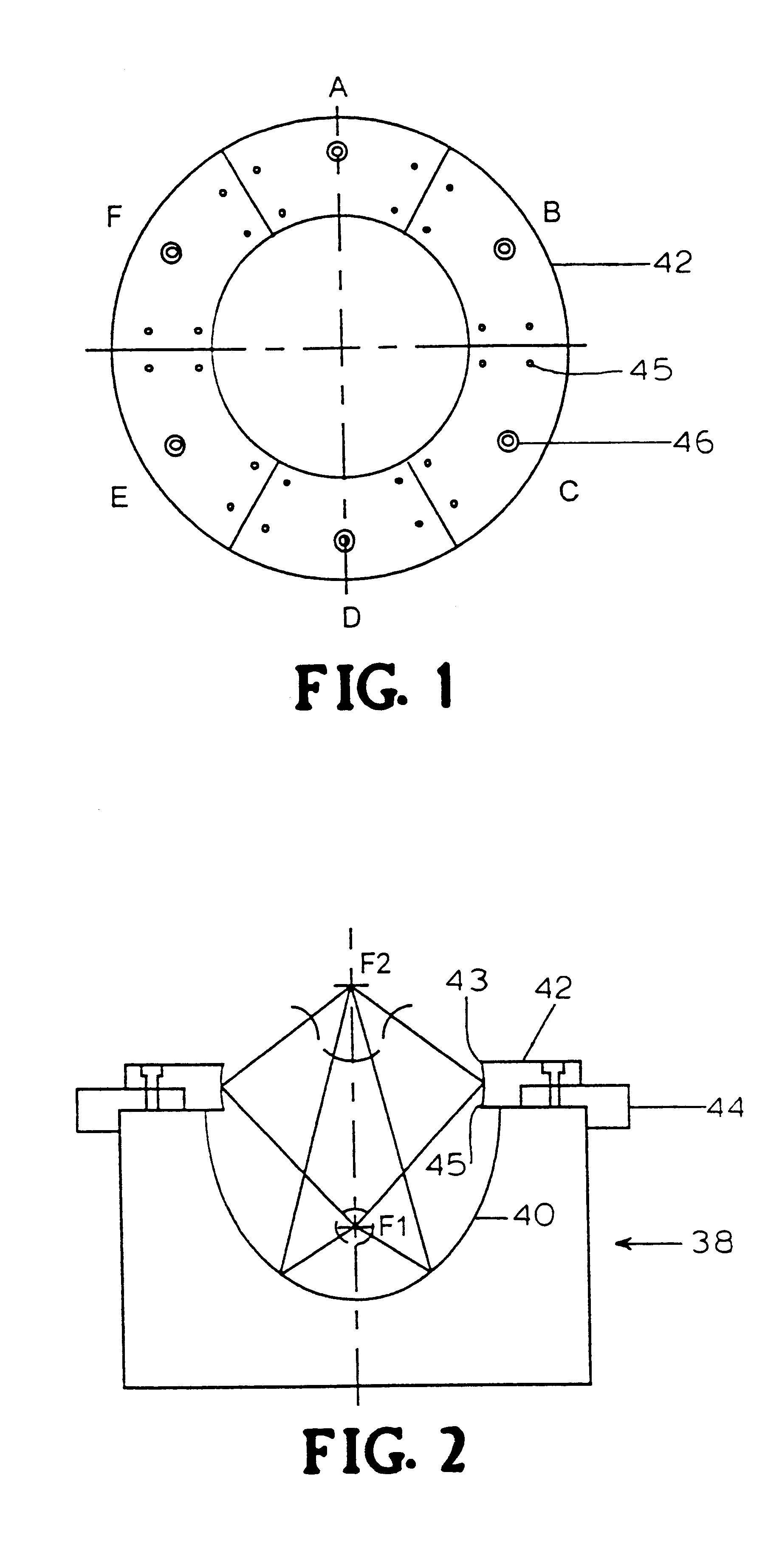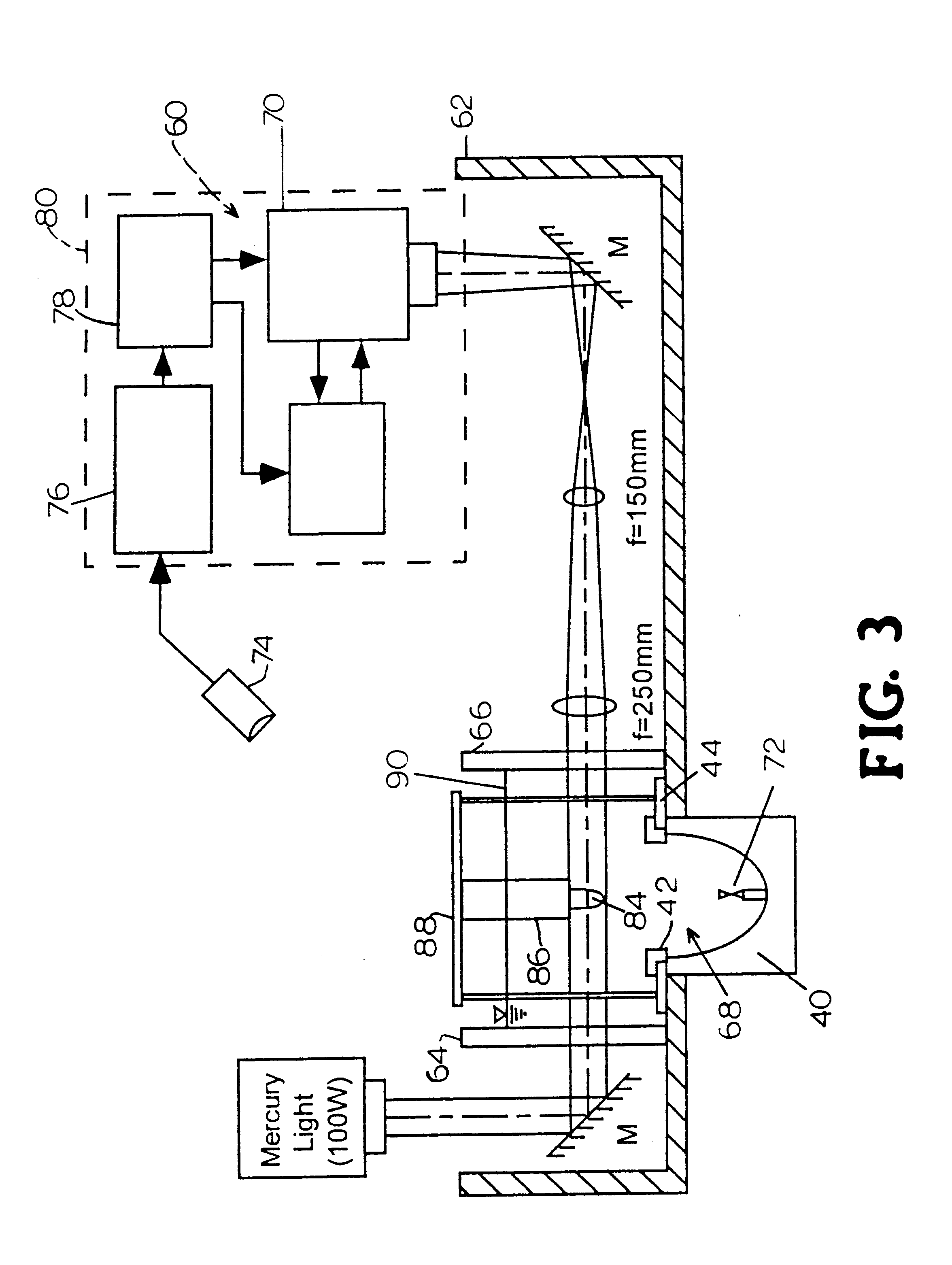Apparatus and method for macromolecule delivery into living cells
a macromolecule and living cell technology, applied in the field of shock wave lithotripsy, can solve the problems of high cell death, low transfection efficiency of shock wave-mediated gene transfer, and low pressure waveform and associated cavitational activity produced by current shock wave lithotripsy
- Summary
- Abstract
- Description
- Claims
- Application Information
AI Technical Summary
Benefits of technology
Problems solved by technology
Method used
Image
Examples
Embodiment Construction
A. Design and Methods
1. Shock Wave Reflector of the Invention
Referring to FIG. 2, a standard truncated ellipsoidal reflector 40 typically used in electrohydraulic shock wave lithotripters is used to focus the shock wave, generated by a spark discharge at the first focus (F1), onto the second focus (F2) of the reflector, typically where the target kidney stones or living cells are located. The propagation time of the shock wave is determined by the ratio of the major axis of the ellipsoidal reflector and the shock wave propagation speed in water. Two ellipsoids can share the same foci (F1 and F2), but have different major and minor axes. Uniquely, the present invention, illustrated in FIGS. 1 and 2, uses a ring reflector 42 in combination with the original reflector 40 to form a staged double ellipsoidal reflector 38 as shown in FIG. 2. Ring reflector 42 can be made of brass or other materials of high acoustic impedance as is known in the art. Ring reflector 42 is connected, via an a...
PUM
 Login to View More
Login to View More Abstract
Description
Claims
Application Information
 Login to View More
Login to View More - R&D
- Intellectual Property
- Life Sciences
- Materials
- Tech Scout
- Unparalleled Data Quality
- Higher Quality Content
- 60% Fewer Hallucinations
Browse by: Latest US Patents, China's latest patents, Technical Efficacy Thesaurus, Application Domain, Technology Topic, Popular Technical Reports.
© 2025 PatSnap. All rights reserved.Legal|Privacy policy|Modern Slavery Act Transparency Statement|Sitemap|About US| Contact US: help@patsnap.com



